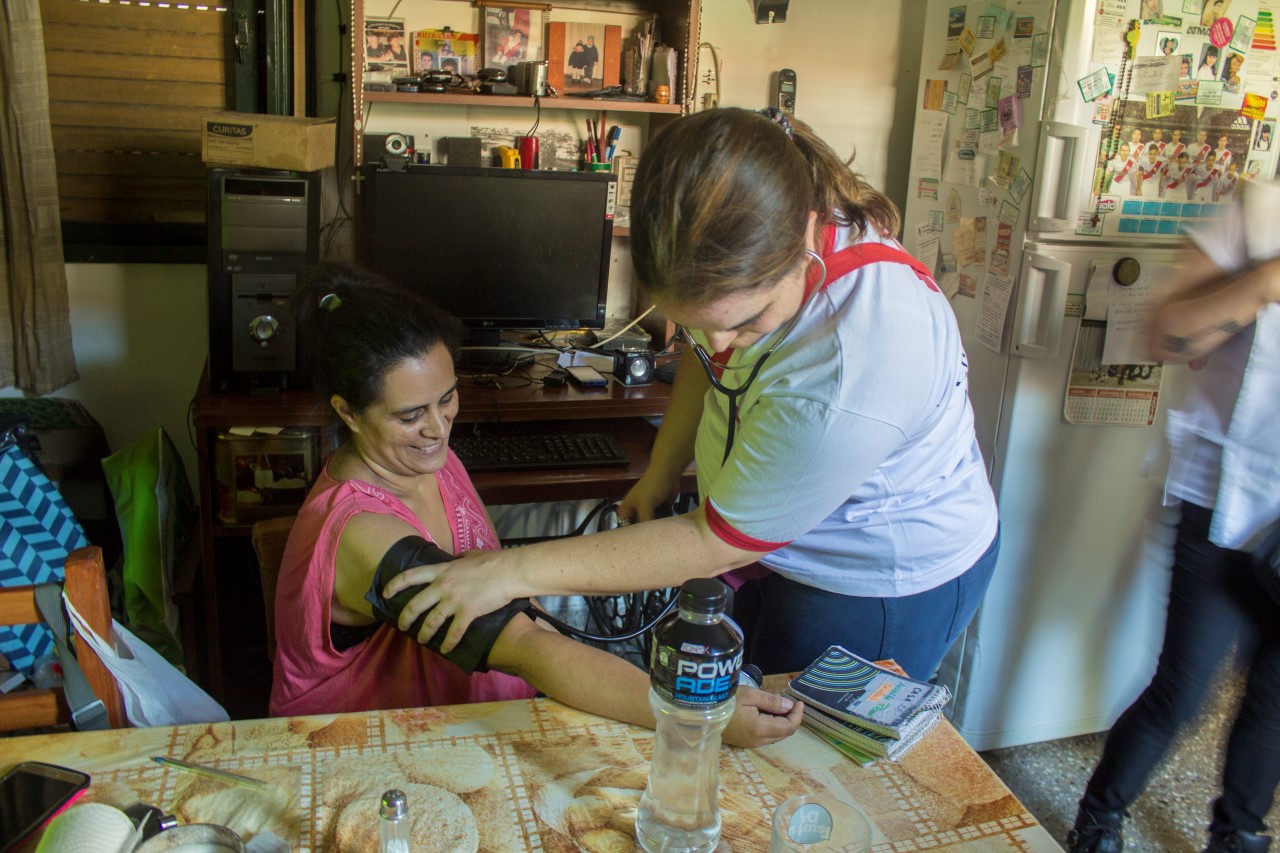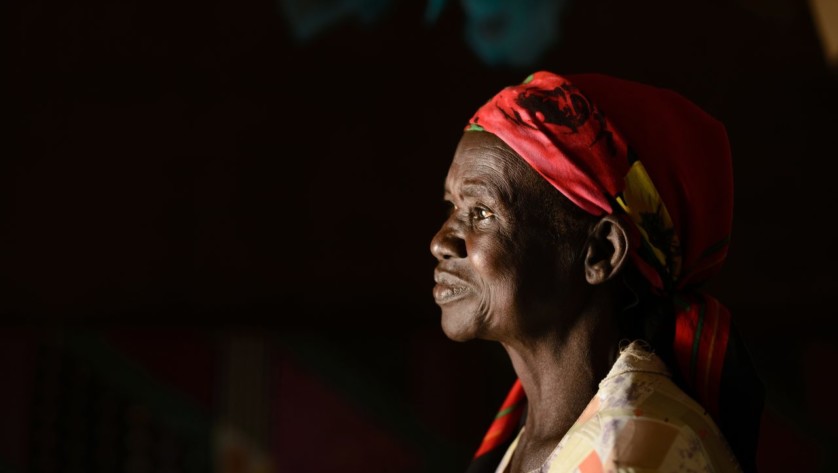“So nice you came on such a hot day!” says Julia. “Come on, sweetheart, we’ve been waiting for you. Do you want something cool to drink?”
“Thanks,” replies one of the volunteers, looking for a chair to sit on in order to start the procedure. “We just want to know if Aristóbulo has behaved well this week and ate fruit and healthy food as he promised.”
“I’ve been a bit nervous lately,” Aristóbulo replies, “and I couldn’t sleep well because last night some noisy people were rehearsing for carnival until midnight right across the street. Sometimes I think I should move back to my home in Catamarca [a province 1,200 kilometres away] and live alone in the middle of the mountains.”
“But then these nice girls wouldn’t visit you every Saturday,” his wife teases.
Like Julia and Aristóbulo, many residents of Barrio Mitre are not natives of Buenos Aires. Originally built during the 1950s as a provisional home for a group of neighbours who lost their houses in a fire, Barrio Mitre was never considered an official neighbourhood of the city.
Over the years, while surrounding neighbourhoods grew more prosperous, residents of Barrio Mitre were increasingly marginalized. Meanwhile, its population — many from rural areas and other Latin American countries — kept growing. As the area’s needs increased, the Argentine Red Cross stepped in to provide basic health services and to work to reduce risks that disproportionately hit the city’s poorest.
“We focus especially on the situation of elderly people as most of them live alone,” explains Ayelén Gómez, who has been a volunteer for ten years and has been working in Barrio Mitre for the last seven. “We come here every Saturday and people are very grateful.”
Gianni Bellone, another of the team of Red Cross volunteers, adds: “Checking their blood pressure every week allows us to be in contact with them, to try to find together solutions for their vulnerabilities.”
The volunteers’ work started some seven years ago but it increased dramatically after a pivotal event in 2013. On 2 April, after heavy rains, the homes of nearly all of Barrio Mitre’s 4,000 residents were completely inundated.
“We lost everything and it was a miracle we escaped that day,” recalls Julia Picón. Born in Paraguay, she has lived in her house for more than 40 years, which she now shares with her husband, her daughter and two of her grandchildren. “I don’t know how to swim so I would have gone with the water if it weren’t for my family helping me. It was a nightmare and I still feel afraid every time it rains.”
Both neighbours and Red Cross representatives agree that in Barrio Mitre the bonds between them strengthened after those floods. “We were there for weeks after the floods,” Gómez says. “People opened their homes for us to teach them how to clean properly once the water receded. We distributed first-aid kits, which they keep and take care of.”
The real goal, however, is not just to respond with aid in cases of emergency, but to help the community prepare itself more effectively. “What we want to achieve is resilience so that they themselves are better prepared to face emergencies,” says Gómez.
In neighbourhoods such as Barrio Mitre, that means starting with the basics, things that most residents of Buenos Aires would take for granted, such as street signs. In one recent initiative, the Argentine Red Cross worked with locals to post street signs at every corner in order to allow people, including emergency personnel, to navigate Barrio Mitre without getting lost.
“It’s something very simple, but before, if you didn’t come from Barrio Mitre, there was no way to know where you were or to find a specific direction,” Gómez says. “In fact, ambulances wouldn’t come when someone called in an emergency because they couldn’t find the address.”
 Red Cross Red Crescent magazine
Red Cross Red Crescent magazine 







 Tech & Innovation
Tech & Innovation Climate Change
Climate Change Volunteers
Volunteers Health
Health Migration
Migration